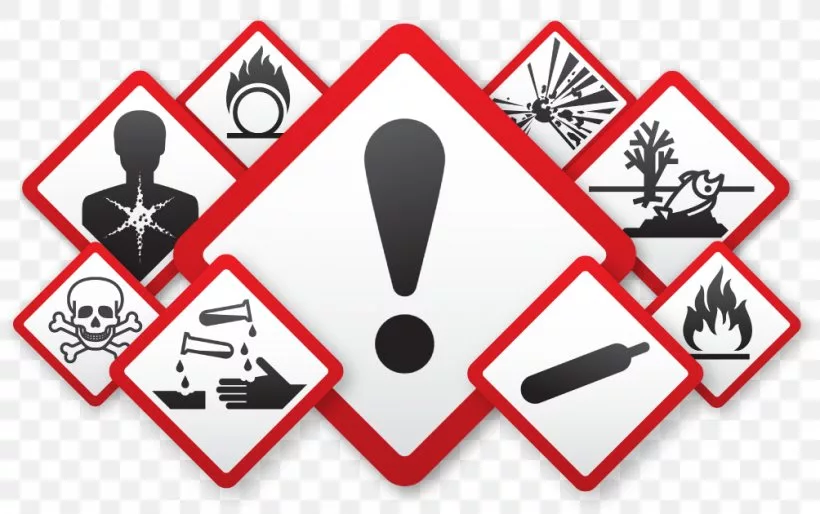
Hazard Communication
Oregon-OSHA Requirements
Division 4, Subdivision Z: Hazard Communication Standard for Ag Employers
Agricultural employers must communicate the hazards of the chemicals used in the workplace to employees. Employees should receive hazard communication training when they begin employment, and also when a new physical or health hazard is introduced into their work area.
Employers must comply with Oregon OSHA’s Hazard Communication Standard by doing the following:
Your written plan should include:
- The person designated to be responsible for obtaining and maintaining SDSs (name and/or job title).
- The person designated to ensure that all containers, including secondary containers, are properly labeled (name and/or job title).
- A list of all hazardous chemicals used in the workplace. This list should use product identifiers that cross-reference with product labels and SDSs.
- The person designated to be responsible for training employees to ensure they are aware of hazards they may encounter while performing job tasks (name and/or job title).
- The information included in hazard communication employee training.
- Methods you, as the employer, will use to inform other employers and contractors (and their employees) of any hazardous chemicals they may be exposed to while at your worksite, and how they can get more information about those hazardous chemicals.
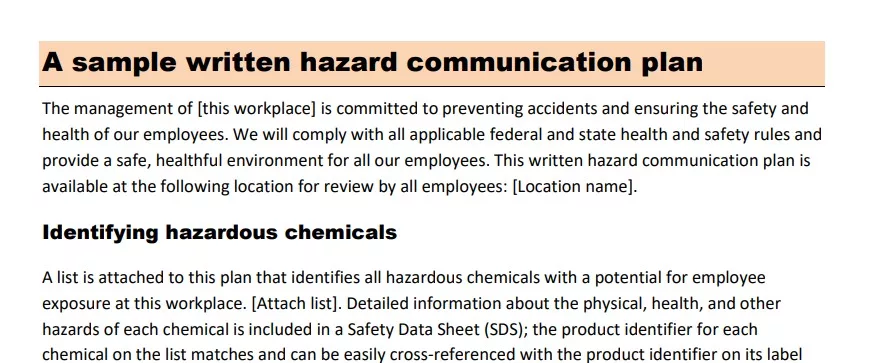
Hazard Communication Plan Sample - English
OR-OSHA’s template for a written hazard communication plan – English version.
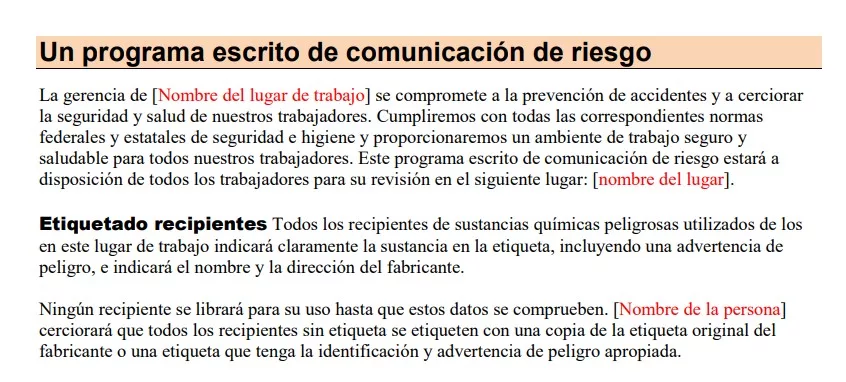
Hazard Communication Plan Sample - Spanish
OR-OSHA’s template for a written hazard communication plan – Spanish version.
To find product Safety Data Sheets, visit TELUS Agronomy’s website and search by product name.
Document Center – Product Labels and Safety Data Sheets
- SDSs need to be available at the workplace for employee review and use for each hazardous substance used or present in the workplace.
- SDSs must be in English and should include each of the 16 standardized sections.
- Employees should have immediate access to the required information in an emergency.
- If employees travel between workplaces during a shift, the SDSs must be kept at a central location at the primary workplace facility (as long as they can be accessed quickly in an emergency).
Before they start their jobs or are exposed to new hazardous chemicals, employees must attend a hazard communication training. Training must include:
Review of Safety Data Sheets (SDSs)
- Train employees how to understand the information in SDSs, highlighting sections such as first aid measures, safe handling, and proper methods of containment if a spill occurs.
- Review the location and availability of SDSs in your workplace.
Review of Label Information
- Train employees how to understand the information in a product label, highlighting the signal words, hazard statement and pictogram(s).
- Provide an explanation of your labeling system: if you use secondary containers for any products, what information will be included on the container label?
- Secondary containers should include – at a minimum – the identity of the product, signal word and a hazard warning system that communicates specific health and physical hazards.
- 6 Required Elements on a Hazardous Chemical Label

Standard Pictograms

Awareness of Hazardous Chemicals in the Workplace
- Communicate to employees which hazardous chemicals are present in the workplace, where they are located in work areas, and which operations in their work area use any hazardous chemicals.
- Review the contents of the SDSs for each hazardous substance (or each class of hazardous substance) that employees are exposed to.
- Explain the physical and health hazards of the chemicals in their work areas.
- Describe any special labeling present in the workplace.
Procedures Protecting Employees
Review the following:
- The location of the written hazard communication plan, and where/how it can be reviewed.
- How employees can protect themselves from exposure to chemicals through use of work practices, personal protective equipment and engineering controls.
- Steps you have taken to prevent or reduce exposure to chemicals in the workplace.
- Methods to detect the presence or release of chemicals in the work area.
- Emergency procedures to follow if an employee is exposed to hazardous chemicals.
Review of Printed Materials
- Review the information in Oregon OSHA Publication #1951: “Safe Practices When Working Around Hazardous Agricultural Chemicals.”. All employees must be given a copy of this publication, either a printed hard copy or access to the mobile version.
PDF Booklet: Safe Practices When Working Around Hazardous Ag Chemicals
Mobile Version with Read-Aloud Audio – ENGLISH
Mobile Version with Read-Aloud Audio – SPANISH
Training Documentation
- Employers should maintain training records that require employee signatures to verify that they have received the training and understand the topics presented.
- Employees need to be trained upon hire and before they are exposed to hazardous chemicals. Additional training is not required unless your hazard communication plan changes or new hazardous chemicals are introduced to the workplace.

Printable Hazard Communication Summary
A printable PDF summary of OR-OSHA’s hazard communication rules.
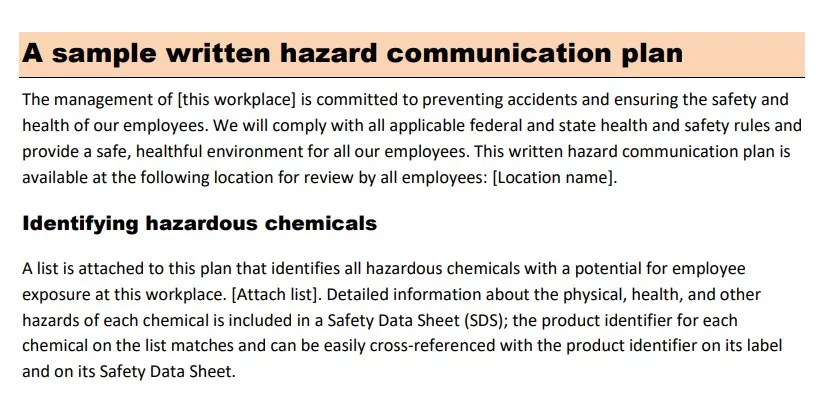
Hazard Communication Sample Written Plan - English
OR-OSHA template for a written Hazard Communication plan – English version.
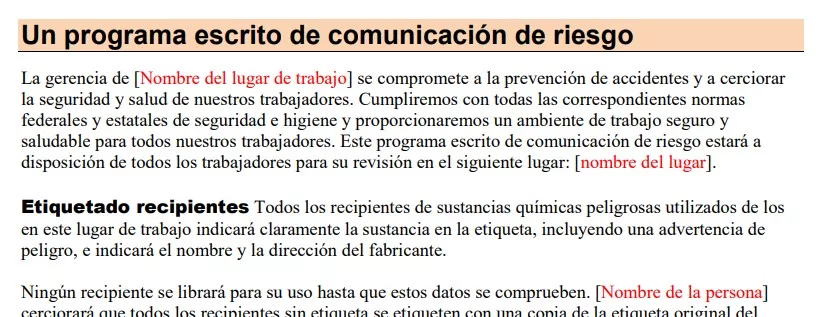
Hazard Communication Sample Written Plan - Spanish
OR-OSHA template for a written Hazard Communication plan – Spanish version.

Hazard Communication Sample Written Plan
SAIF template for a written hazardous communication plan – customize to fit your specific operation.

Safe Practices When Working Around Hazardous Ag Chemicals (Bilingual)
OR-OSHA booklet for Safe Practices When Working Around Hazardous Agricultural Chemicals – Bilingual version includes both English and Spanish text.
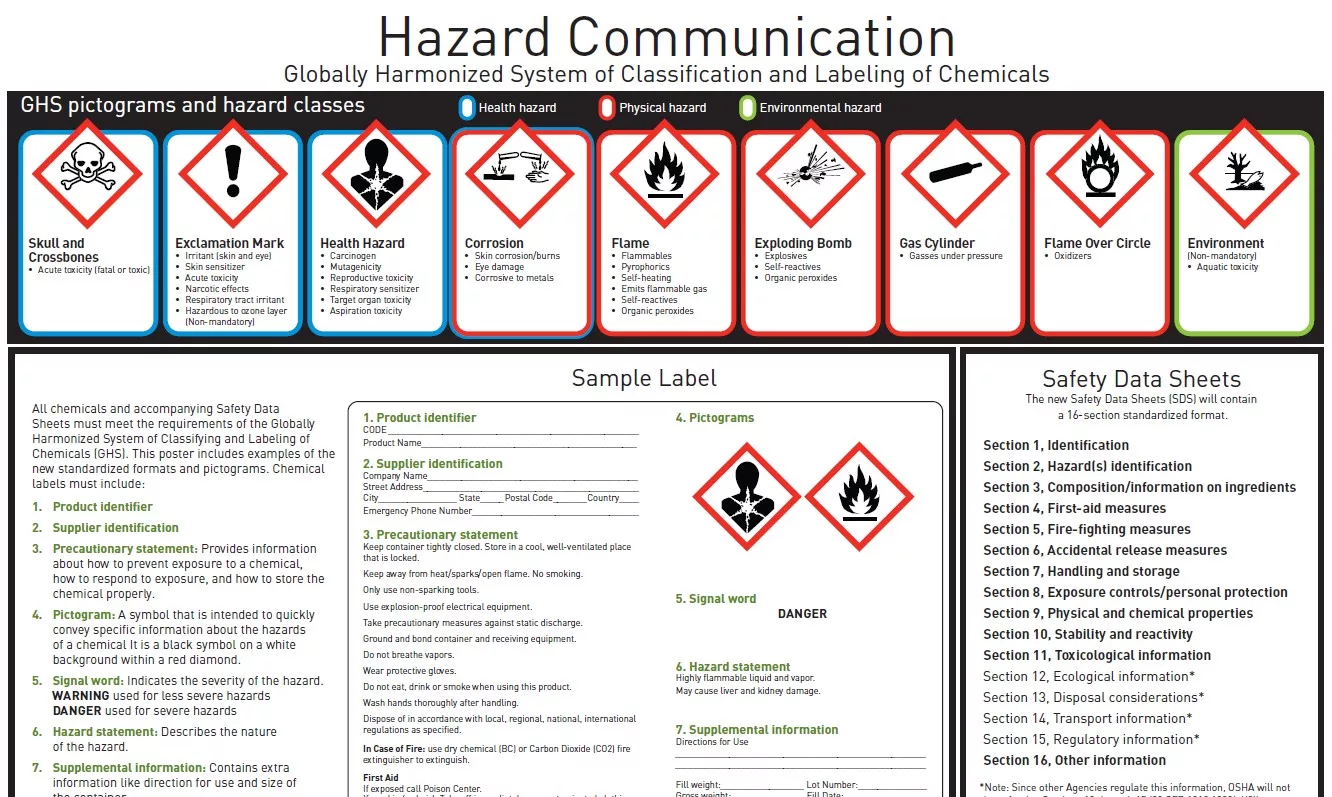
Hazard Communication Poster - English
SAIF Hazard Communication poster includes pictograms, parts of a label, and the required sections of a Safety Data Sheet – English version.
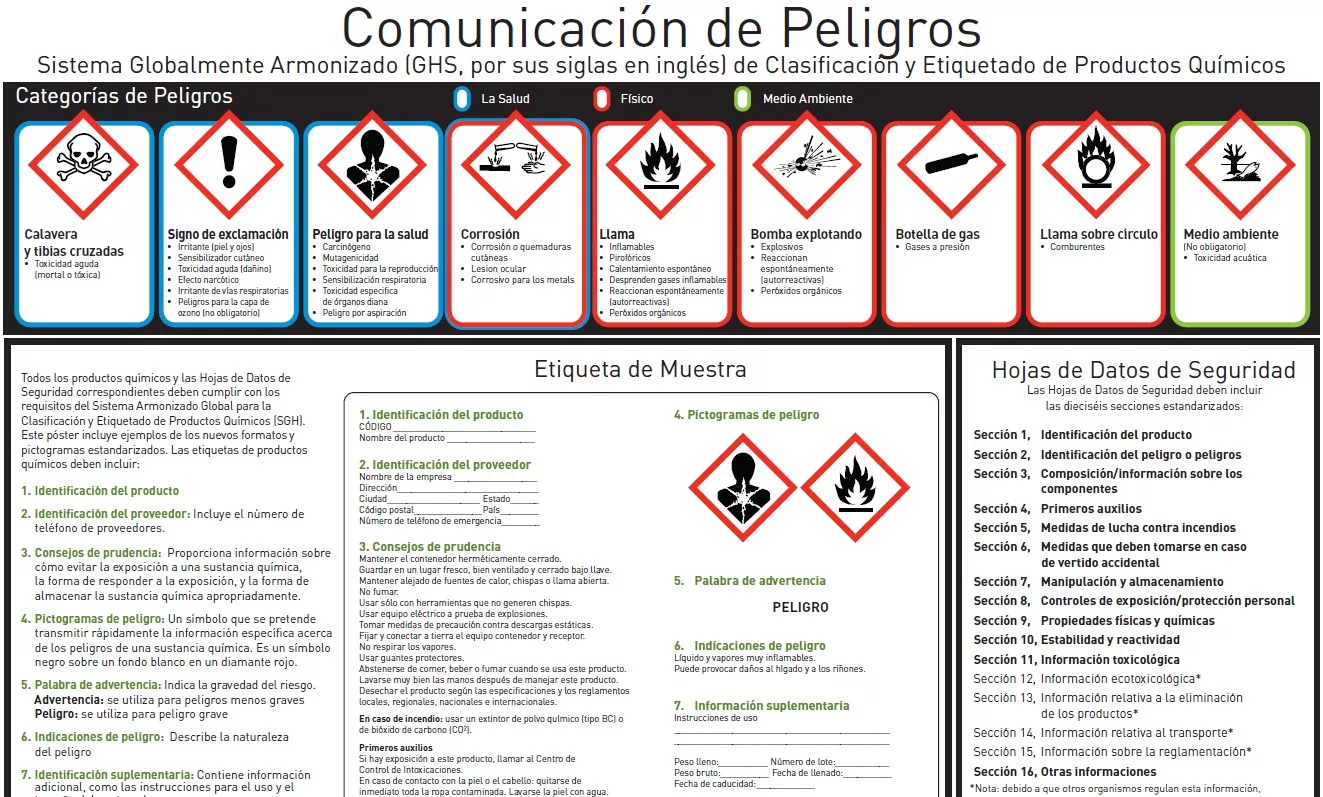
Hazard Communication Poster - Spanish
SAIF Hazard Communication poster includes pictograms, parts of a label, and the required sections of a Safety Data Sheet – Spanish version.

Safety Talk: What's in a Safety Data Sheet?
SAIF 10-Minute Safety Talk document includes SDS content to cover and interactive activities.

Product Labels and Safety Data Sheets
Find and print product labels and safety data sheets for your records.
